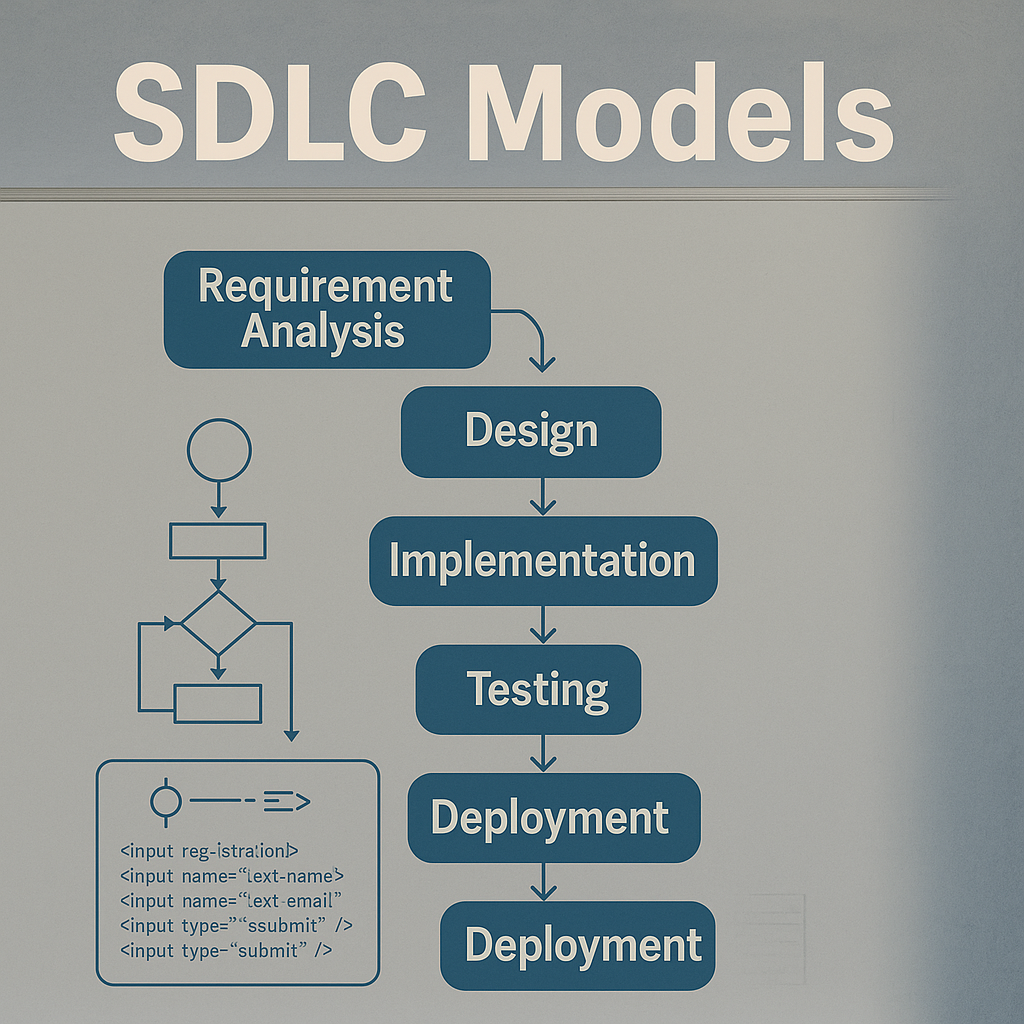Learn everything about the Software Development Life Cycle (SDLC) in this detailed guide. Whether you’re a developer, tester, or student, understanding SDLC is crucial to building quality software .This article covers the SDLC process, its phases.
Imagine This…
Let’s say you’re building a dream project with your friends — a food delivery app like Zomato or Swiggy, but for your college campus. You call it “FoodFast”.
Your goal is simple: Students can order food from hostel canteens and get it delivered quickly.
You and your team are excited. You start coding right away. But soon…
- One guy builds login pages while another is already coding payment
- The database is not matching with the app’s flow
- Someone forgot to test
- And suddenly, bugs, rework, and chaos begins
That’s when a mentor steps in and says:
“You guys forgot the most important thing — SDLC. If you don’t follow a process, your project will fall apart.”
Let’s now walk through the SDLC (Software Development Life Cycle)
Phase 1: Requirement Gathering – What Are We Really Building?
Before writing a single line of code, you gather your team and ask:
- What do users really want?
- How should the app work?
- Do we need payment integration? OTP login? Admin panel?
You talk to hostel students and take feedback. Based on this, you write a clear plan.
Output: A list of features and expectations — called the SRS Document.
Never start a project blindly. Understand the needs first.
Phase 2: Design – Let’s Sketch the Blueprint
Now that you know what to build, it’s time to decide how to build it.
You sit down and draw rough wireframes:
- Login screen
- Restaurant menu page
- Cart and order screen
- Admin dashboard
Also, you plan the database schema, APIs, and system architecture.
Output: Wireframes, architecture diagrams, database designs
Good design = smooth development
Phase 3: Implementation – It’s Coding Time!
Now comes the fun part: Coding.
You divide the work:
- Raj builds the backend in Node.js
- Priya handles the UI in React
- You integrate payment gateway
Everyone follows coding standards. You use GitHub for version control and update tasks in Trello.
Output: Functional code and screens
Teamwork + clean code = efficient development
Phase 4: Testing – Let’s Catch the Bugs!
Before you release FoodFast, you ask your friends to try it.
You test:
- Can users login properly?
- What happens if internet goes off during payment?
- Does the order reach the canteen?
Some features crash. Some buttons don’t work. You fix them.
Output: Bug-free app with proper error handling
Testing saves your app from embarrassment
Phase 5: Deployment – Let’s Go Live
You finally deploy FoodFast on:
- Android Play Store
- A domain like foodfast.com
- Hosting backend on AWS
You tell the students: “Now you can order your food from anywhere on campus!”
Output: Live app available to real users
Deployment is not the end, it’s just the beginning
Phase 6: Maintenance – Keep It Running Smoothly
Now that your app is live:
- Some students face login issues
- Others request a “favourite restaurant” feature
- A payment bug shows up
So, your team continues to fix bugs, add features, and release updates (v1.1, v1.2…).
Output: A better and more stable version with each update
A good app is always evolving
Phase 7: Documentation – Record Everything
Meanwhile, you also write:
- How to use the app
- API documentation
- Developer notes
Why?
So, if someone joins your team later, they won’t be lost.
Output: User guides, setup instructions, API docs
Good documentation = future-ready team
SDLC is Not Just Theory – It’s a Real-Life Savior
Your FoodFast app didn’t succeed just because you had a good idea.
It succeeded because you followed a step-by-step system — the SDLC.
You understood the problem
You planned it smartly
You executed it in order
You tested, deployed, and maintained it
Who Should Learn SDLC?
| Role | Why It Matters |
|---|---|
| Developers | Know what to code and when |
| Testers | Know when to test and how |
| Managers | Track project progress |
| Clients | Set realistic expectations |
| Students | Ace interviews and real-world projects |
In the Next Blog: Let’s Dive Into All SDLC Models
You now understand how SDLC works — but did you know there are different models of SDLC?
Like:
- Waterfall Model
- Agile Model
- V-Model
- Spiral Model
- Big Bang Model
Each model has its own use case and magic. Want to master all models in detail?
Click here to read: www.techrhym.com/blog
SDLC is the Superpower of Software
SDLC is not a boring theory. It’s the real framework that turns:
- A chaotic idea → into a successful software
- A group of coders → into a powerful team
- Random coding → into meaningful creation
“Software fails without process. But with SDLC, it thrives.”
Now that you’ve learned SDLC in story format — you’ll never forget it. Share this with your team, juniors, or anyone in tech




